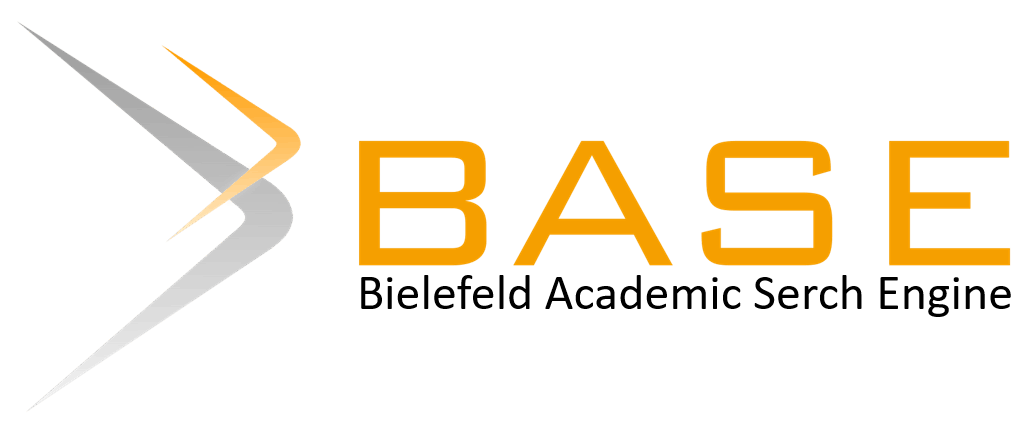Identification and alternative solutions to plant blindness in high school students
Abstract
This study was conducted to determine the level of plant blindness in three schools in West Java. This study was also conducted with the aim of looking at the differences in the level of plant blindness as well as the relationship between the tests and questionnaires given to students. As a follow-up, this study discusses alternative solutions to the problems that arise in the three schools. The population of this study was three schools in West Java, namely one school in Bandung City, West Bandung Regency, and Indramayu Regency. From the population, one class was taken using Convenience sampling technique. The research method used was descriptive cross-sectional method. The data that has been obtained is then processed using descriptive and inferential statistics to see the differences and relationships. The results showed a significant difference between the three schools. The results also showed a positive relationship between the test results and the plant awareness questionnaire. This shows that students who have high plant awareness have high knowledge as well. The alternative solution proposed in this study is the use of eDNA Metabarcoding research as a practicum to study biodiversity, considering that eDNA can identify plant species specifically and accurately.
Keywords
Full Text:
PDFReferences
Amprazis, A., & Papadopoulou, P. (2024a). Key competencies in education for sustainable development: A valuable framework for enhancing plant awareness. February, 1–17. https://doi.org/10.1002/ppp3.10625
Amprazis, A., & Papadopoulou, P. (2024b). Plant Blindness Intensity Throughout the School and University Years: A Cross-Age Study. 137–146. https://doi.org/10.1007/978-3-031-44792-1_10
Amprazis, A., Papadopoulou, P., & Malandrakis, G. (2021). Plant blindness and children’s recognition of plants as living things: A research in the primary schools’ context. Journal of Biological Education, 55(2), 139–154. https://doi.org/10.1080/00219266.2019.1667406
Azevedo, H., Soares-Silva, I., Fonseca, F., Alves, P., Silva, D., & Azevedo, M. M. (2022). Impact of educational gardens and workshop activities on 8th-grade student’s perception and knowledge of plant biology. Education Sciences, 12(9), 1–16. https://doi.org/10.3390/educsci12090619
Blue, S., Hargiss, C. L. M., Norland, J., Dekeyser, E. S., & Comeau, P. (2023). Plant blindness represents the loss of generational knowledge and cultural identity. Natural Sciences Education, 52(1), 1–15. https://doi.org/10.1002/nse2.20106
Borsos, É., Borić, E., & Patocskai, M. (2023). What can be done to increase future teachers’ plant knowledge? Journal of Biological Education, 57(2), 252–262. https://doi.org/10.1080/00219266.2021.1909632
Calderón-Sanou, I., Münkemüller, T., Boyer, F., Zinger, L., & Thuiller, W. (2020). From environmental DNA sequences to ecological conclusions: How strong is the influence of methodological choices? Journal of Biogeography, 47(1), 193–206. https://doi.org/10.1111/jbi.13681
Carrasco-Puga, G., Díaz, F. P., Soto, D. C., Hernández-Castro, C., Contreras-López, O., Maldonado, A., Latorre, C., & Gutiérrez, R. A. (2021). Revealing hidden plant diversity in arid environments. Ecography, 44(1), 98–111. https://doi.org/10.1111/ecog.05100
Colombari, F., & Battisti, A. (2023). Citizen science at school increases awareness of biological invasions and contributes to the detection of exotic ambrosia beetles. NeoBiota, 84, 211–229. https://doi.org/10.3897/NEOBIOTA.84.95177
Coşkunserçe, O. (2024a). Use of a mobile plant identification application and the out-of-school learning method in biodiversity education. Ecology and Evolution, 14(4), 1–12. https://doi.org/10.1002/ece3.10957
Dünser, B., Möller, A., Fondriest, V., Boeckle, M., Lampert, P., & Pany, P. (2024). Attitudes towards plants–exploring the role of plants’ ecosystem services. Journal of Biological Education, 59(1), 124–138. https://doi.org/10.1080/00219266.2024.2308293
Gubo, V., & Schiffl, I. (2022). The development of students’ interest in and knowledge of botany by means of a workshop on pollination and floral ecology. International Journal of Research in Education and Science, 8(2), 262–273. https://doi.org/10.46328/ijres.2220
Johnson, M. D., Fokar, M., Cox, R. D., & Barnes, M. A. (2021). Airborne environmental DNA metabarcoding detects more diversity, with less sampling effort, than a traditional plant community survey. BMC Ecology and Evolution, 21(1), 1–15. https://doi.org/10.1186/s12862-021-01947-x
Kissi, L., & Dreesmann, D. (2022). Flowers with powers–conception and evaluation of an ‘educational seed mix.’ Journal of Biological Education, 56(2), 147–162. https://doi.org/10.1080/00219266.2020.1757485
Kubiatko, M., Fančovičová, J., & Prokop, P. (2021). Factual knowledge of students about plants is associated with attitudes and interest in botany. International Journal of Science Education, 43, 1426 - 1440. https://doi.org/10.1080/09500693.2021.1917790.
Krtková, J. (2024). Teaching plant biology through “Plant senses”—a more engaging, holistic approach and introduction. Theoretical and Experimental Plant Physiology, 36(3), 491–502. https://doi.org/10.1007/s40626-023-00305-0
Leontidou, K., Vokou, D., Sandionigi, A., Bruno, A., Lazarina, M., De Groeve, J., Li, M., Varotto, C., Girardi, M., Casiraghi, M., & Cristofori, A. (2021). Plant biodiversity assessment through pollen DNA metabarcoding in Natura 2000 habitats (Italian Alps). Scientific Reports, 11(1), 1–13. https://doi.org/10.1038/s41598-021-97619-3
Nunes, R., de Bem Oliveira, I., de Araújo Dias, P., Bidinotto, A. B., & de Campos Telles, M. P. (2021). BarcodingGO: A problem-based approach to teach concepts related to environmental-DNA and bioinformatics. Biochemistry and Molecular Biology Education, 49(2), 210–215. https://doi.org/10.1002/bmb.21424
Nyberg, E., Brkovic, I., & Sanders, D. (2021). Beauty, memories and symbolic meaning: Swedish student teachers´ views of their favorite plant and animal. Journal of Biological Education, 55(1), 31–44. https://doi.org/10.1080/00219266.2019.1643761
O’Connor, K. (2022). Constructivism, curriculum and the knowledge question: Tensions and challenges for higher education. Studies in Higher Education, 47(2), 412–422. https://doi.org/10.1080/03075079.2020.1750585
Pany, P., Meier, F. D., Dünser, B., Yanagida, T., Kiehn, M., & Möller, A. (2022a). Measuring students’ plant awareness: A prerequisite for effective botany education. Journal of Biological Education, 58(5), 1103–1116. https://doi.org/10.1080/00219266.2022.2159491
Parsley, K. M. (2020). Plant awareness disparity: A case for renaming plant blindness. Plants People Planet, 2(6), 598–601. https://doi.org/10.1002/ppp3.10153
Parsley, K. M., Daigle, B. J., & Sabel, J. L. (2022). Initial development and validation of the plant awareness disparity index. CBE Life Sciences Education, 21(4), 1–14. https://doi.org/10.1187/cbe.20-12-0275
Pawlowski, J., Apothéloz-Perret-Gentil, L., & Altermatt, F. (2020). Environmental DNA: What’s behind the term? Clarifying the terminology and recommendations for its future use in biomonitoring. Molecular Ecology, 29(22), 4258–4264. https://doi.org/10.1111/mec.15643
Putriani, T., Sunandar, A., & Qurbaniah, M. (2023). Plant blindness profile of high school students in Hulu Gurung sub-district, Kapuas Hulu district. JPBI (Jurnal Pendidikan Biologi Indonesia), 9(3), 326–334. https://doi.org/10.22219/jpbi.v9i3.26856
Qureshi, M. A., Khaskheli, A., Qureshi, J. A., Raza, S. A., & Yousufi, S. Q. (2023). Factors affecting students’ learning performance through collaborative learning and engagement. Interactive Learning Environments, 31(4), 2371–2391. https://doi.org/10.1080/10494820.2021.1884886
Thomas, H., Ougham, H., & Sanders, D. (2022). Plant blindness and sustainability. International Journal of Sustainability in Higher Education, 23(1), 41–57. https://doi.org/10.1108/IJSHE-09-2020-0335
Varotto, C., Pindo, M., Bertoni, E., Casarotto, C., Camin, F., Girardi, M., Maggi, V., & Cristofori, A. (2021). A pilot study of eDNA metabarcoding to estimate plant biodiversity by an alpine glacier core (Adamello glacier, North Italy). Scientific Reports, 11(1), 1–13. https://doi.org/10.1038/s41598-020-79738-5
Wäldchen, J., & Mäder, P. (2017). Plant species identification using computer vision techniques: A systematic literature review. Archives of Computational Methods in Engineering, 25, 507 - 543. https://doi.org/10.1007/s11831-016-9206-z.
Wulandari, S., Sunandar, A., & Setiadi, A. E. (2023). The plant blindness profile of secondary school students. Journal of Education Research and Evaluation, 7(3), 502–510. https://doi.org/10.23887/jere.v7i3.65315
DOI: https://doi.org/10.17509/aijbe.v8i1.78364
Refbacks
- There are currently no refbacks.
 AIJBE is under Creative Commons Attribution-ShareAlike 4.0 International License
AIJBE is under Creative Commons Attribution-ShareAlike 4.0 International License








